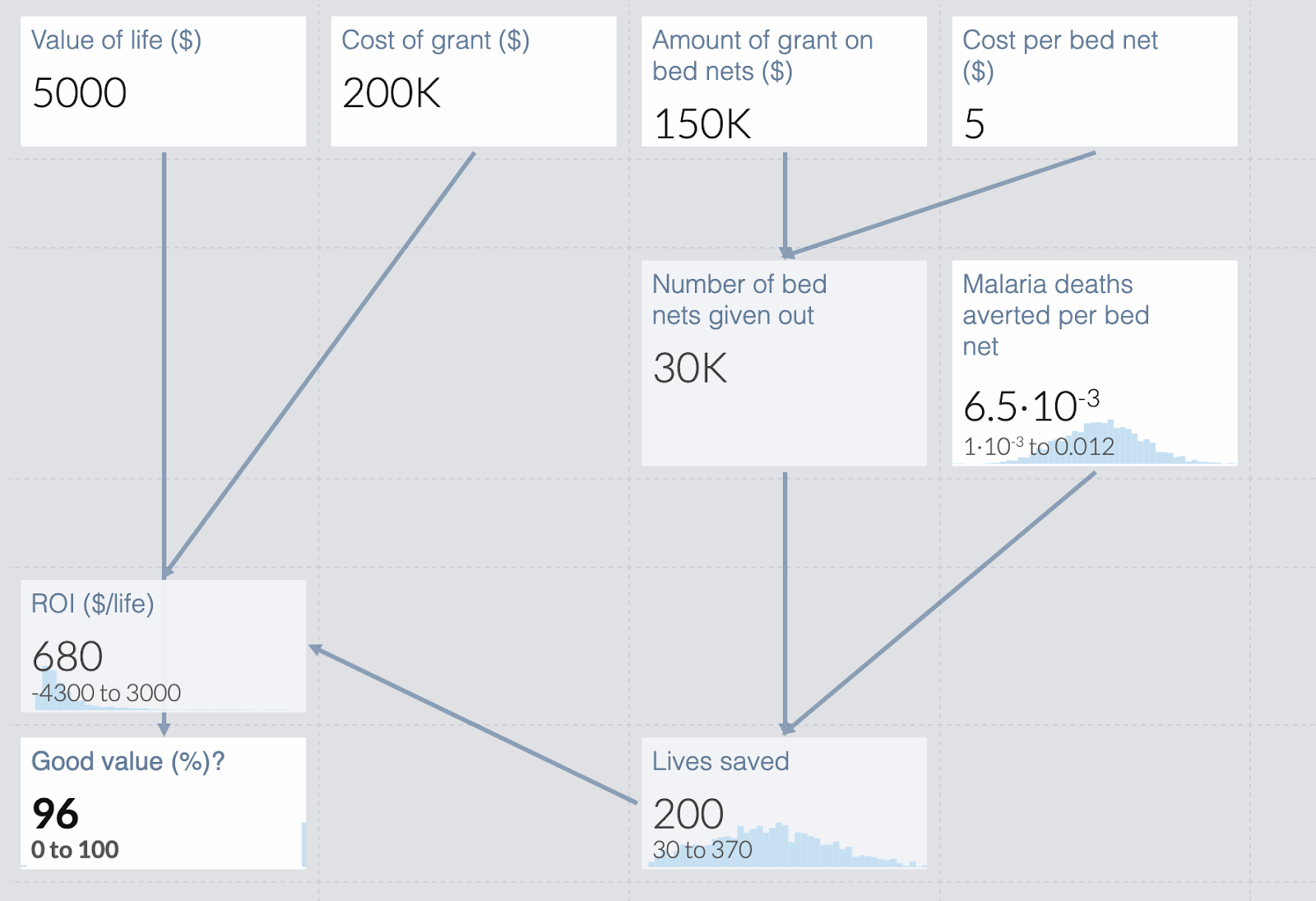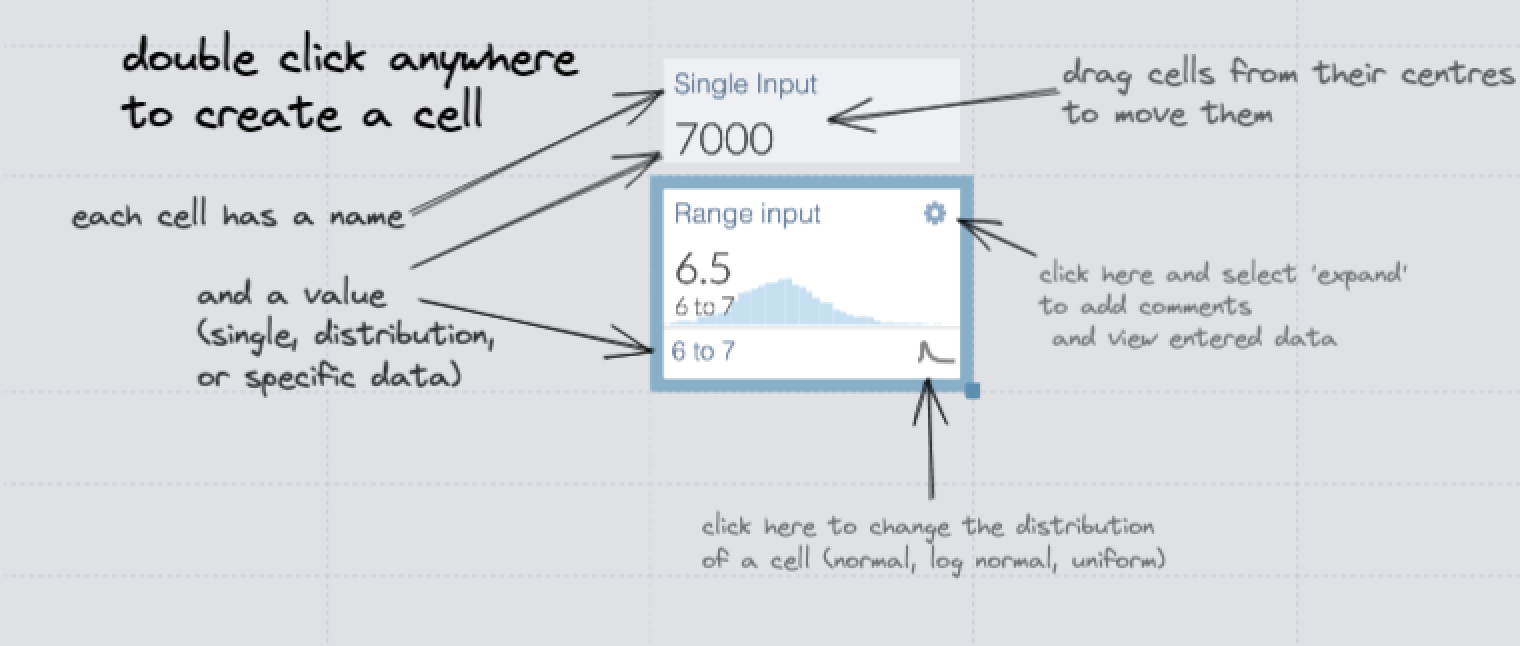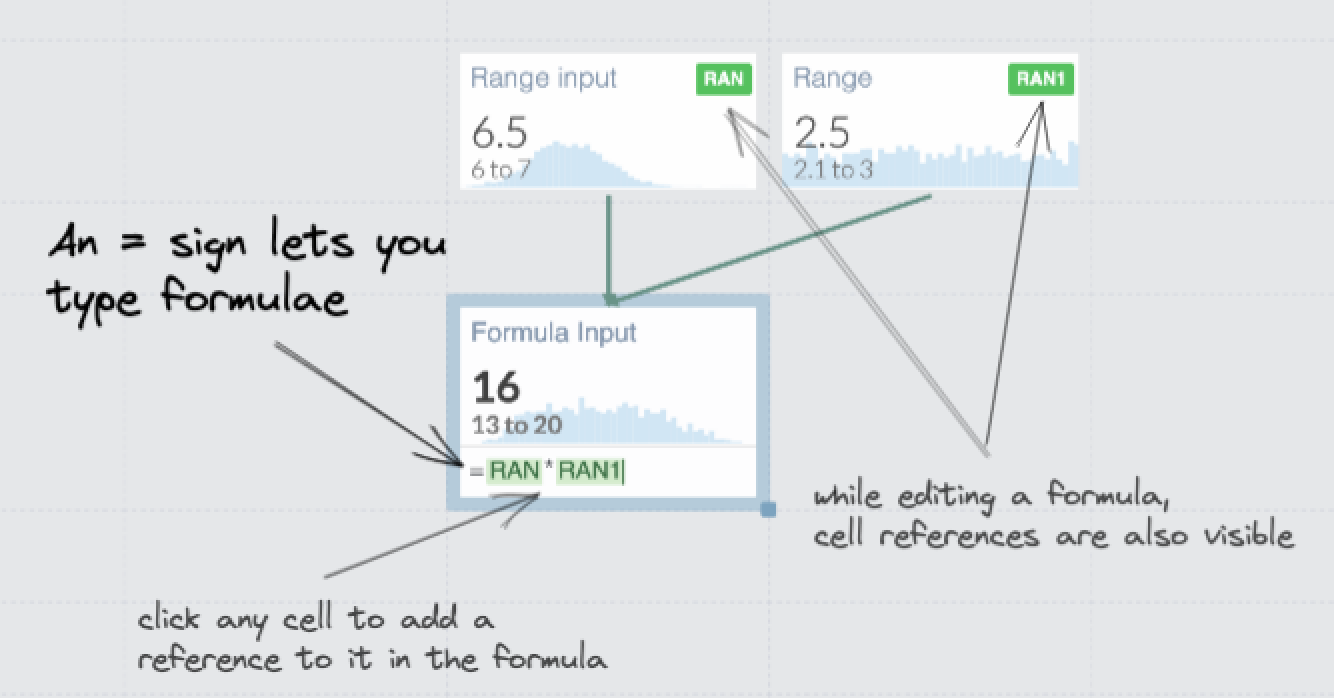Guesstimate is a quantitative model-building tool built to focus on uncertainty. The interface works the same as google sheets or excel; a grid of cells where data can be entered. Cells can then be referenced by other cells for calculations.
This post is a text tutorial for guesstimate. The landing page for guesstimate also gives a rough idea of the point of the tool, and is a reasonable place to get a feel for if this is the right tool for the job.
When can Guesstimate be Useful?
- Estimate Return on Investment for an EA intervention
- Predict attendance of your EA group over the next year
- Decide whether you should get a surgery or not
- Pick which job you should take
- Decide whether you should date somebody
- Pick which microwave you should buy
- Predict personal & business finances
Video Guide
Text Guide
Why use guesstimate?
Guesstimate has two key benefits over google sheets/excel:
- Each cell can have uncertainty
- Cell references are displayed visually (as well as in the formula of a cell)
This means that guesstimate is highly appropriate for fermi estimates, logic models, and any other format where you have uncertainty about some or all of the inputs, or of their effect sizes on the outputs. The visual nature of guesstimate also makes it easy to share; it’s easy to see how a model works.
If you prefer hands-on learning, a simple model to demonstrate the basic features is available here.

Basic Guesstimate Functions
Double click anywhere empty in the grid to create a new cell. A cell has two attributes, a name and a value. A name should just help people (and you, in six months!) understand your model. The value can be of several types:
- Single value (7000)
- 90% Confidence interval (6 to 7[1])
- Specific dataset (9.8, 17, 12, 34, -2, 113)

Formulae
Cells’ value can also reference other cells like other spreadsheets. Typing ‘=’ at the beginning of the value field tells guesstimate the value is a formula; you can then click any other cell to create a reference to it, and perform basic numerical operations or ‘if’ statements on them.
While editing a formula, cells also show a three-letter reference at their top right, which you can type to manually refer to another cell.

For a more in-depth guide, see the official documentation.
Worked Examples
- How much more effective is disease eradication than 60% vaccination? (lots of models in this post, example model here)
- How cost effective is Effective Self Help? (model, forum post)
- Estimate impact of various factors on shrimp welfare (forum post)
- Estimate impact of sound therapy for tinnitus (forum post)
- Compare impact of different cause areas (forum post)
- How much free time do I have a week?
- One persons' living costs in Chile
- How much market share can your business expect?
- How many Gremlins are lost each year to microwave-related violence?
- How many cats does it take to fill a car with fluff?
Personal Experience
Personally, I find guesstimate models pretty intuitive to build & to interpret. I expect people who dislike visual information and/or have a lot of experience coding will find Squiggle more intuitive.
Guesstimate also gets quite clunky and difficult to understand with larger models with many connections, as the screen becomes more clustered/it becomes difficult to decide where boxes belong (see e.g. this model). This can be mitigated by breaking the problem up into sensible modules/subsections that are given their own area or entire model.
Try it Yourself!
With each post, I'm going to encourage you to give it a go!
For guesstimate, I've picked a specific question to get things going; in future I'll try to encourage finding examples closer to your life.
What is the total value of all the goods in a supermarket?
Spend 15-30 minutes making a guesstimate model to answer this question! Share your model in the comments as well as your experience of using guesstimate.
We're also running a short event in the EA GatherTown at 6pm GMT today to use Guesstimate, if you'd like to bring your model or make it during the session, or if you have any questions!
Tomorrow: Visualisation of Probability Mass, a neat little tool for changing visual intuitions into numbers, and vice versa. We'll be having a GatherTown event at the same time tomorrow!
- ^
Can be normal, lognormal, or uniform distribution




Have passed on to the team!